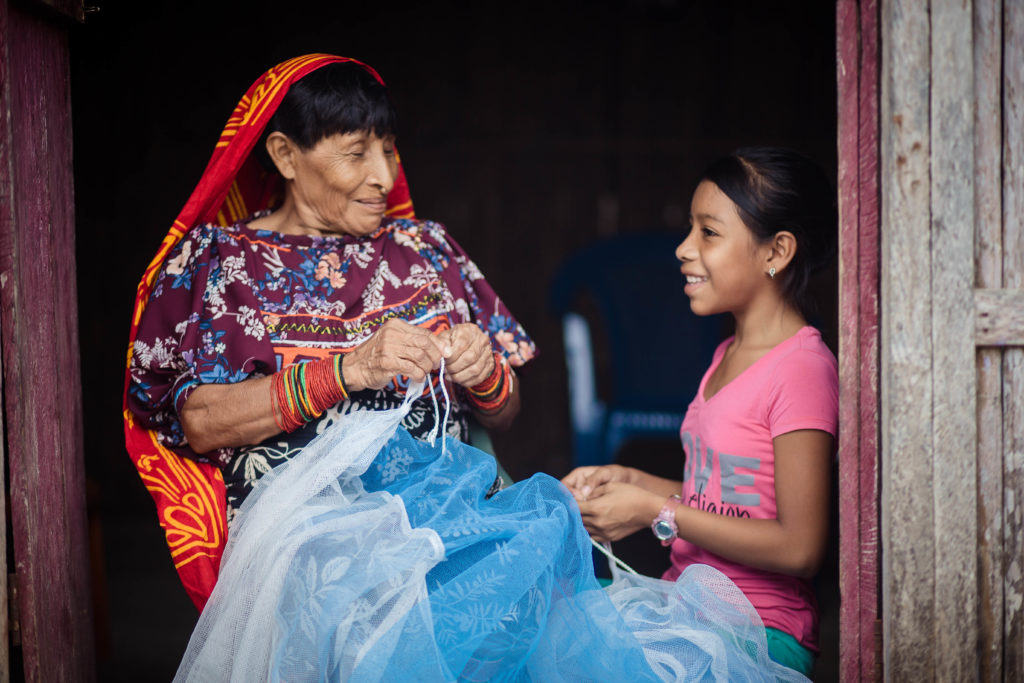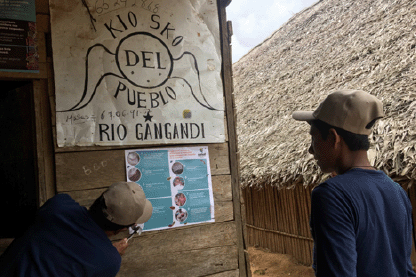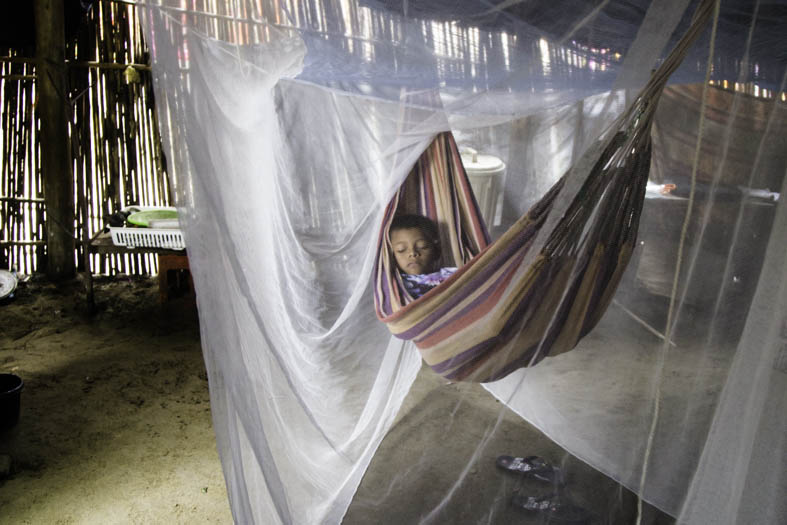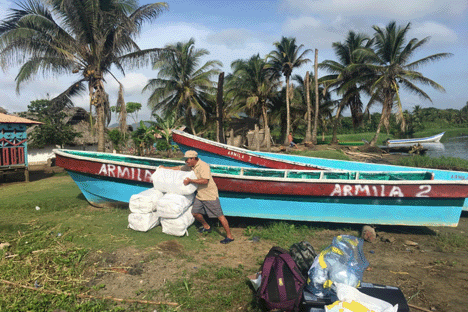Traditional authorities are sometimes viewed as “roadblocks” to the implementation of public health activities. However, during our vector control pilot program, early engagement with Indigenous leaders has resulted in more community participation, ownership, and acceptance of life-saving malaria interventions.

Vector control interventions – any method used to limit or eradicate mosquitos which transmit malaria – are crucial to control and eliminate the disease. The most effective interventions are either long-lasting insecticidal nets (LLINs) or indoor residual spraying (IRS).
In Panama, IRS is the core vector control intervention, and is currently deployed in parts of the country that are at risk for malaria based on incidence and case counts. In 2019, Panama’s Ministry of Health launched a pilot program, with support from CHAI, to reinforce its ongoing interventions by introducing long-lasting insecticidal bed and hammock nets in key areas.
More: Learn about CHAI’s malaria work across Mesoamerica and Hispaniola
Long-lasting insecticidal nets are treated with an insecticide incorporated into the net fabric in order to tolerate multiple washes and last for several years without needing to be retreated. They are a well-known and cost-effective method for preventing malaria transmission. However, a previous LLIN campaign in Panama was implemented without necessary planning or data collection. Many communities therefore did not use the nets provided.
To help determine if nets should be incorporated into the government’s vector control strategy, CHAI is supporting the national malaria program in the planning, implementation, monitoring, and evaluation of a pilot to distribute long-lasting insecticidal nets and hammock nets in 15 high-risk localities in the Guna Yala Comarca, a territory with low but persistent malaria transmission.
Understanding community contexts
Like other places around the world, malaria in Panama is mostly concentrated in rural and remote areas where access to the health system is limited, such as the Guna Yala Comarca. Guna Yala is a semi-autonomous, indigenous coastal region composed of a series of islands in the Caribbean Sea. The territory is primarily inhabited by the Guna indigenous group, which is governed by the General Guna Congress under the authority of three high-level leaders. Similarly, each community has its own political organization, led by a saila who represents the Guna Congress locally.
In Panama, traditional authorities sometimes have been viewed as “roadblocks” for the implementation of public health activities. However, the sociopolitical organization of Guna communities is a remarkable strength in this regard. For this reason, the bed and hammock net pilot aims to engage both Ministry of Health stakeholders and traditional Guna authorities throughout the entire process. Sailas from each targeted community are key drivers of the intervention and are ensuring community participation throughout the bed and hammock net campaign.

Placing posters explaining the campaign in public places.
As with any LLIN campaign, a fundamental component of the pilot has been the design and carrying out of social behavioral change communication (SBCC) activities. Typically, in Panama, SBCC programs are focused on a Spanish-speaking audience and do not include materials in the indigenous language of the local population.
As part of the pilot, messages on the importance of sleeping under nets and the proper way to use and care for them are tailored to ensure both the Guna and Afro-Latino populations receive culturally and linguistically appropriate materials. The communication strategy involves radio messages in the Guna language discussing the importance of nets to prevent malaria and announcing the distribution dates and objectives of the pilot. Posters are hung in key places throughout communities such as stores, schools, and health centers. Pamphlets are also provided to each home to promote the proper use and care of nets. Given the different ethnicities in the same region, bridging the language barrier with tailored SBCC activities has been essential to the campaign’s success.

A boy lies in his hammock under his newly installed LLIHN.
Much of the Guna population sleeps in hammocks and the number of hammocks within a household can be as high as twelve in some cases. Due to the high number of sleeping spaces per household, net distribution takes place door-to-door. Health brigades install the required nets in each registered home. The brigades consist of local vector control technicians, community health workers, and community volunteers, who are chosen by the Saila and other community leaders.
Locals – especially women – in the lead
Guna society is predominantly matriarchal, and so a key feature of the pilot program is the active participation of women, especially during net installations, to drive community buy-in.
Doña Roselina is a female leader within the Playón Grande community in the Guna Yala Comarca. During the bed and hammock net campaign in July 2019, she led a group of volunteers that participated in the net distribution in her community. When the Ministry of Health Vector Control Department Field Supervisor asked her why she had mostly female volunteers serving in her brigades, she confidently answered: “We are the seed of this land; therefore, our role is to protect our people and keep them healthy. We need to fight against the mosquitos that make us sick.”

Unloading mosquito nets on the island for delivery to communities.
Participation of local volunteers and community health workers has been crucial to ensure community ownership of the campaign and has allowed for the reinforcement of key messaging to the community in the local language. Early engagement of the Guna authorities and other key local figures has resulted in increased community participation, ownership, and acceptance of the bed and hammock nets.
Although the pilot is still underway, we have already learned one major lesson: to ensure the inclusion of traditional authorities and to meaningfully engage with the communities where we work. They are a great asset in the promotion and implementation of vector control interventions in Guna Yala and should be considered when implementing vector control activities within additional indigenous areas of the country and throughout the region.





